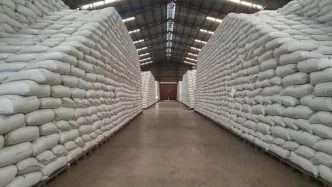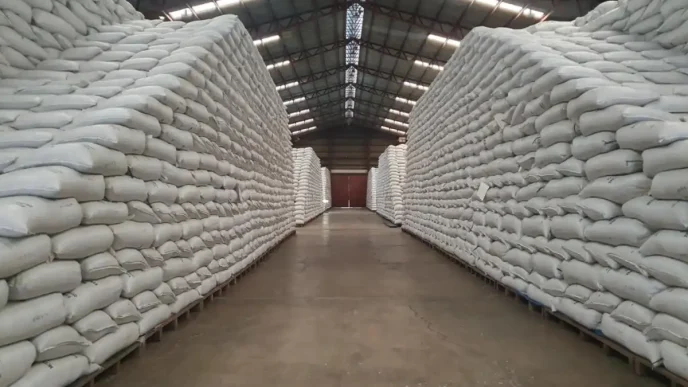Malaysia, one of the world’s leading producers of crude palm oil (CPO), is likely to see steady prices for this vital commodity in the near term, despite fluctuating global demand and supply chain disruptions. As a cornerstone of the nation’s economy, CPO prices impact not only agricultural sectors but also trade balances and rural livelihoods across the country. With international markets closely watching, industry experts and government officials are cautiously optimistic about maintaining price stability amid a complex web of economic and environmental factors.
Current Market Dynamics
The Malaysian palm oil industry, which accounts for a significant portion of global supply, has faced a turbulent few years due to labor shortages, weather anomalies, and shifting demand from key markets like India and China. However, recent analyses suggest that CPO prices are expected to hover within a stable range, buoyed by balanced production levels and strategic policy measures. According to local reports, the Malaysian Palm Oil Board (MPOB) has played a pivotal role in monitoring output and ensuring that supply aligns with international demand, preventing sharp price swings.
One key factor contributing to this stability is the anticipated recovery in production following labor constraints caused by pandemic-related border closures. With foreign workers gradually returning to plantations in states like Sabah and Sarawak, output is projected to meet annual targets. This comes as a relief to exporters who faced significant losses when production dipped in recent years. Additionally, favorable weather patterns in the first half of 2025 have supported yields, further easing concerns over supply shortages.
Global Demand and Trade Policies
On the demand side, Malaysia’s CPO exports are heavily influenced by the appetites of major importers. India, the world’s largest consumer of edible oils, has historically been a top buyer, though recent policy shifts toward domestic oilseed production have introduced uncertainty. Meanwhile, China’s steady demand for palm oil in food processing and industrial applications continues to provide a reliable market. Industry observers note that any significant policy change in these countries could ripple through Malaysia’s export figures, but current trade agreements and diplomatic efforts appear to mitigate such risks.
Another layer of complexity arises from global sustainability concerns. The European Union’s stringent regulations on deforestation-linked commodities have placed pressure on Malaysian producers to certify their products as environmentally friendly. While compliance costs are high, successful certification could open premium markets, potentially offsetting price pressures from oversupply. The Malaysian government, in collaboration with industry bodies, has ramped up efforts to meet these standards, positioning the country as a leader in sustainable palm oil production.
Domestic Economic Impacts
At home, stable CPO prices are a double-edged sword. For smallholder farmers, who make up a substantial portion of the industry, consistent pricing offers a predictable income stream, crucial for rural communities in Peninsular Malaysia and East Malaysia. However, it also limits windfall gains during periods of global scarcity, which some argue could fund reinvestment into modern farming techniques. The government has introduced subsidies and training programs to support these farmers, aiming to boost productivity without relying solely on price surges.
For the broader economy, CPO price stability contributes to Malaysia’s trade surplus, a key driver of GDP growth. The commodity’s export value, often denominated in ringgit, also affects currency fluctuations. With the ringgit facing pressures from global economic headwinds, a steady palm oil sector provides a buffer against volatility. Economists suggest that maintaining this balance will be critical as Malaysia navigates inflation concerns and seeks to attract foreign investment in other sectors.
Environmental and Social Considerations
Beyond economics, the palm oil industry remains a flashpoint for environmental debates. Deforestation and habitat loss, particularly in biodiversity-rich regions like Borneo, have drawn international criticism. While the Malaysian government has pledged to halt deforestation by 2030, enforcement remains a challenge. Activists argue that stable prices could discourage overproduction, but only if paired with strict land-use regulations. On the flip side, industry stakeholders caution that overly restrictive policies might push production to less regulated neighboring countries, undermining global sustainability goals.
Socially, the industry’s reliance on foreign labor continues to spark discussion. Reports of poor working conditions on some plantations have prompted calls for reform, with the government under scrutiny to enforce labor laws. As production ramps up, ensuring fair treatment of workers—many of whom hail from Indonesia and Bangladesh—will be essential to maintaining Malaysia’s reputation as a responsible producer. Recent initiatives to improve housing and wages signal progress, though long-term solutions require sustained commitment.
Regional and Global Competitors
Malaysia’s position in the global palm oil market is not without competition. Indonesia, the world’s largest producer, often sets the tone for pricing through its export policies, including periodic bans aimed at securing domestic supply. Such measures have historically driven up global prices, benefiting Malaysian exporters in the short term. However, they also highlight the need for Malaysia to diversify its markets and reduce reliance on a handful of buyers. Other players, such as Thailand and Colombia, are scaling up production, though their output remains a fraction of Malaysia’s.
In response, Malaysia has explored value-added products like refined palm oil and biodiesel, which fetch higher margins than crude oil. Investments in downstream processing facilities, particularly in industrial hubs like Johor, aim to capture more of the supply chain’s value. If successful, this shift could insulate the industry from raw commodity price fluctuations, providing a more sustainable economic model in the long run.
Looking Ahead: Risks and Opportunities
As Malaysia charts its course in the global palm oil market, several risks loom on the horizon. Geopolitical tensions, particularly in key export regions, could disrupt trade flows, while climate change poses a persistent threat to yields. The El Niño weather phenomenon, expected to intensify in coming years, could bring droughts that devastate plantations if not mitigated through irrigation and crop resilience programs.
Yet opportunities abound. Technological advancements in agriculture, from drone monitoring to genetically improved seedlings, offer ways to boost efficiency without expanding land use. Trade negotiations within ASEAN and beyond could secure new markets, while sustainability certifications might unlock premium pricing in environmentally conscious regions. For now, the focus remains on maintaining the delicate balance of supply, demand, and policy that underpins current price stability.
As Malaysia’s palm oil industry stands at this crossroads, the coming months will test its ability to adapt to a rapidly changing global landscape. Whether steady prices translate into long-term prosperity for farmers, exporters, and the national economy remains an open question, one that policymakers and stakeholders must address with foresight and collaboration.
















